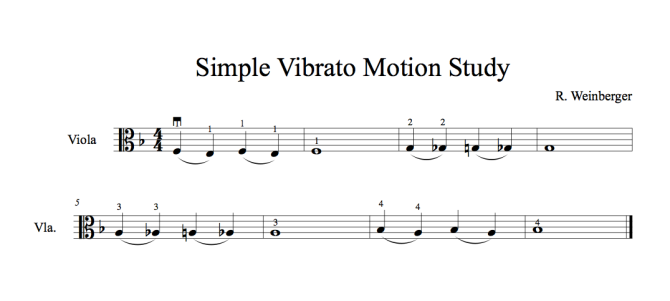by Rozanna Weinberger
A theme I often touch upon is the matter of how vibrato is physically conceptualized.
Proponents of wrist vibrato, for example encourage students to thrust the wrist forward and back,wherein the wrist is the point where movement is generated. But if we are to take a more holistic approach to vibrato, where the wrist doesn’t exert the effort but is a link in a chain and a chain reaction, then teachers must find a way to help students discover how to let the wrist be an effortless reaction to the movement of the elbow hinge, which in turn necessitates a lose upper arm. The wrist has the ability to ‘fall back’ rather than ‘using force and over exertion in the wrist’.
SIMPLE MOTION STUDY FOR THE WRIST & ARM
1. Begin this simple motion study by relaxing the left arm to the side.
2. Bend the elbow, bringing up the hand so fingers are facing towards oneself.
3. Allow the forearm to drop down then come back up again from the ‘hinge’ of the elbow. Notice when doing so there is a chain reaction where the hand falls backwards from the wrist while exerting very little effort to do so.
When applying this idea to playing, its actually good to practice vibrato in the third position so one can actually ‘rest’ the wrist against the side of the instrument. This simple study can be practiced 2 ways. The student can glide the finger tip back to the half step then back to the original note. Practicing this study must include ‘discovering’ the feeling of ‘falling back’ while playing the lowered half step. Over time the student can accomplish this same task while keeping the finger tip stationary on the string while allowing the ‘falling feeling’ in the wrist to cause the pitch fluctuation.

